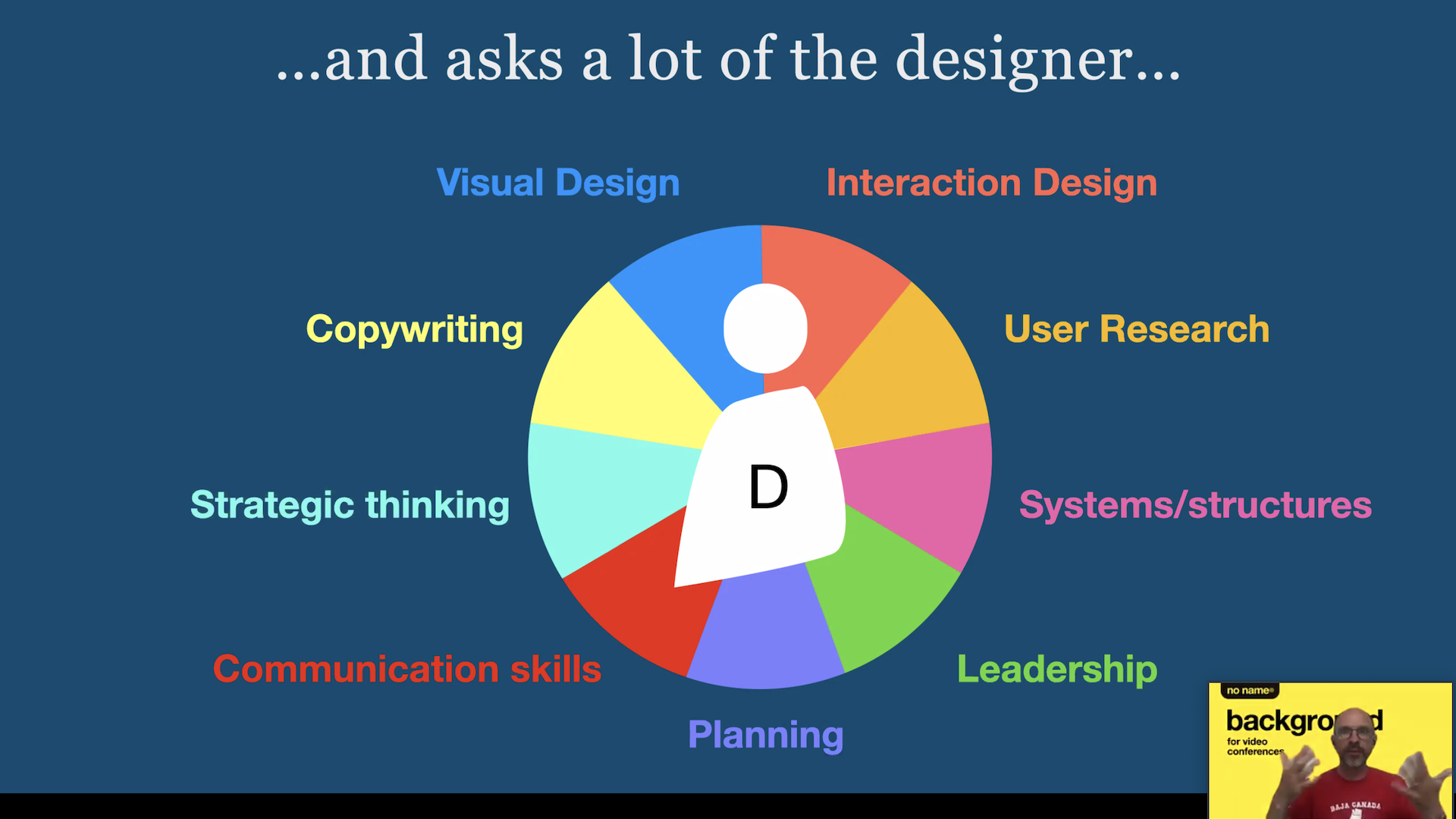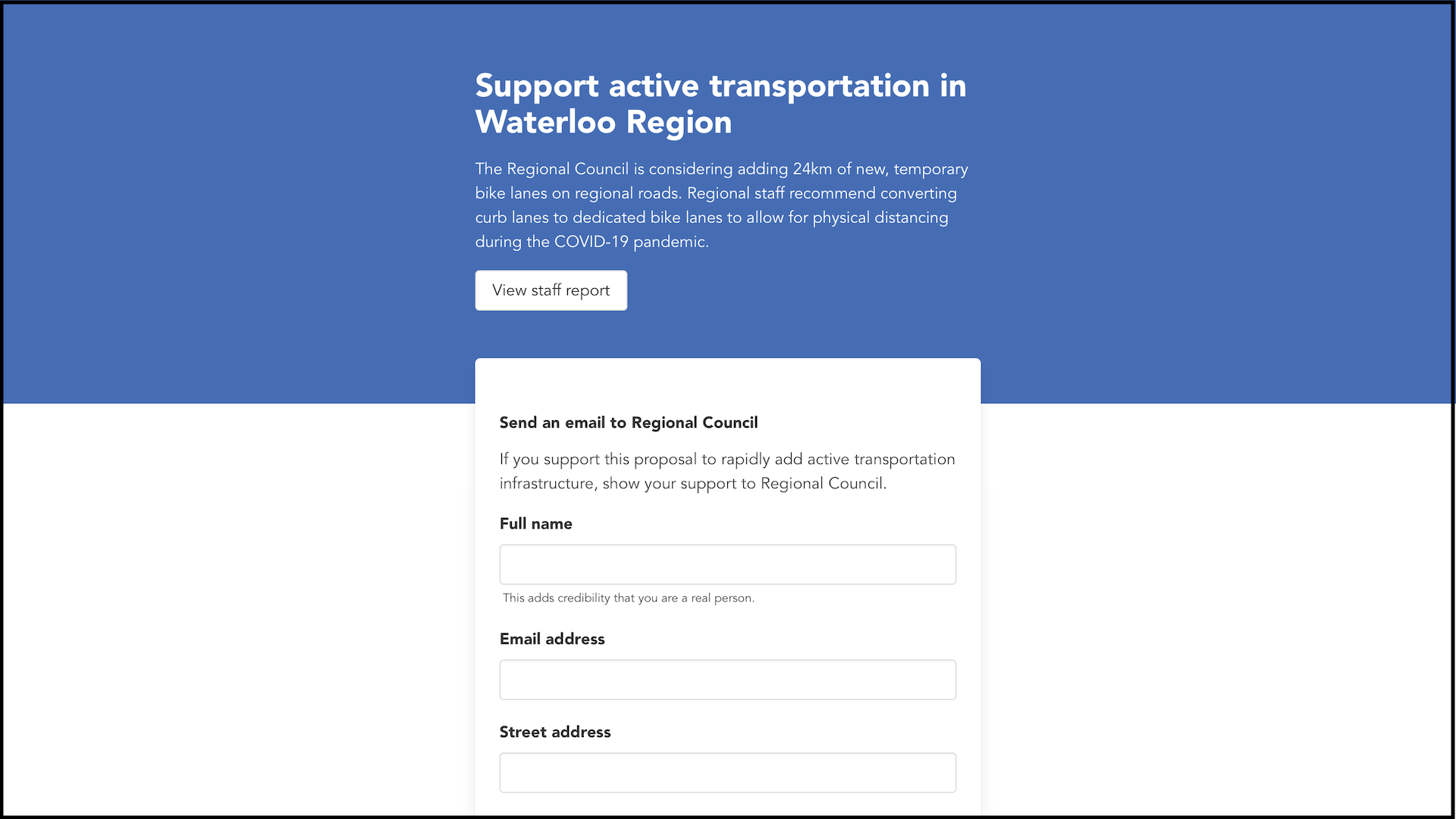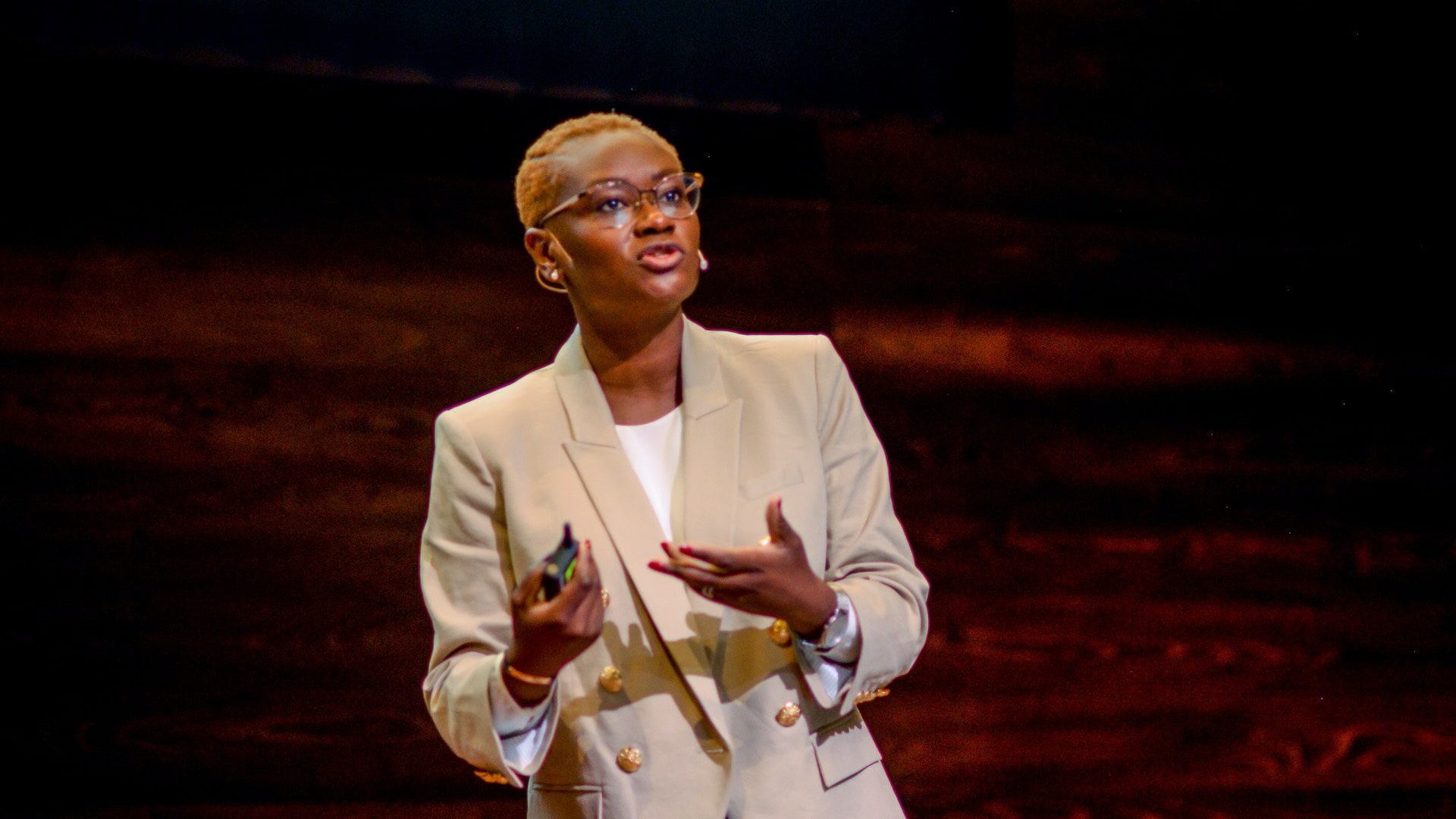We’re designing our teams all wrong.
While most agile development frameworks may value small, cross-functional teams with a lone designer, one design leader proposed another way forward: A team of design teams grounded in purpose, run by strong team leads to help design work deliver more value and help organizations stay healthy.
At a uxWaterloo virtual meetup earlier this month, Peter Merholz, who co-founded Adaptive Path and co-authored Org Design for Design Orgs: Building and Managing In-House Design Teams, shared his thoughts on why the team, not any one designer, is the atomic unit of design organizations.
The lone designer is expected to wear many hats on a cross-functional team: They have to do visual design, write content, research, and more, said Merholz. But that has negative consequences on how design is practiced in companies, he said. Designers become lonely working on one feature in isolation for a long time. User experience gets siloed. And it’s not the most efficient use of the designer’s time or skills.
Rather than optimize to make the most of engineering, Merholz asked: “What if we were to optimize for the UX experience?”
The idea of small, cross-functional teams or squads comes out of Agile practice where the goal is to build fast and iterate often. Amazon has cross-functional “two pizza” teams (where the idea is to keep the team small enough that two pizzas can feed everyone) and Spotify uses a squad model where small cross-functional teams work and sit together. Google even had a theory that if you put the best designers together, they’d surely be a successful design team. Except the research didn’t show that, said Merholz. When Google tested their hypothesis they found the most important indicator of a successful team was psychological safety — the ability to take risks and fail without fear of reprimand. Talent didn’t even crack the top five, said Merholz.
So Merholz proposed another way forward: Creating design teams for each stage of the buyer experience that are built around the atomic elements of a design team — purpose, people, practices, and potential.
Design teams are stronger when designers work together because then designers don’t get overwhelmed with delivery expectations, said Merholz. Design teams also mean you can have a variety of skills needed to deliver a great design. And it’s easier to balance the design load, he added.
With design teams senior designers are also in a position to mentor younger ones so it’s clear how a design career in that organization looks, said Merholz.
Overall, design teams better support designers in their work and in their careers, he said.
There are key ways to set up a design team that works well.
First, have a purpose.
“If you don’t have a purpose, you don’t have a team. What you have is a group of people,” said Merholz. “The purpose is what defines the team. It’s what unites them and makes it clear why this team exists.”
Once you have purpose, turn your attention to the other important atomic elements of a design team, Merholz said, such as the people on the team.
Design teams should be made up of four to seven designers, led by a strong team lead who can act as a coach, diplomat, and a champion in a role that is more about relationships than the work itself.
“A great team lead amplifies their team’s abilities and wields influence throughout the organization,” said Merholz. “They’re the key links in that chain making sure that this experience is hanging together for your customer.”
After you’ve set out the team’s purpose and the designers on the team, establish practices, such as norms and rituals for how you’ll do the design work, said Merholz.
Rituals are important because they help the team establish an identity, and set out how they’ll behave and express their culture. One way to establish rituals and norms is to have a kick-off celebration when people start working together. At Adaptive Path, Merholz said he and Org Design for Design Orgs co-author Kristin Skinner would kick-off team projects using 15 cards with qualities they wanted team members to show on each project. The qualities were separate from skills and focused on behaviours — organize, listen well, advocate, delegate, be positive, for example. Each team member would leave the room and the rest of the team would pick a few cards with qualities they wanted that person to champion throughout the project. Then the team member would return to the room and find out which cards others had picked for them.
“This was about how you are going to show up,” said Merholz.
The final important element of a design team is potential: How do you know when the design team is successful in delivering business value? Merholz said there are several ways to measure success, such as whether the team is putting out good work at a steady pace, the quality of the work, team morale, and a high retention rate. All those are good indicators to measure whether the team is successful and the design organization is healthy.
You will likely have many teams in your organization and people may be part of several teams, said Merholz. But each team needs to identify its four Ps: purpose, people, practices, and potential.
“You want to look at all of those scales to make sure that each of those teams is as complete as it can be with the work that they’re doing,” said Merholz. “With an intentional team guided by strong leadership, design cannot only deliver its best work, it becomes a force to be reckoned with throughout the organization.”
Merholz answered questions after his talk, which ranged from how do you lead a team with everything that’s happening in the world — from Black Lives Matter protests to the pandemic (“give space and don’t gloss over the reality of things,” he suggested) to how do you establish a strong, connected team in a remote environment where people may not be sitting together.
“A team is not defined by proximity,” he said. “The way you do it is by acting as a team.”
Team members can watch a design documentary together and have a Slack channel to talk about it while doing so, he suggested.
uxWaterloo is open to anyone with an interest in user experience and is a partnership between Communitech and the Interaction Design Association. The group meets monthly. You can learn about their next event when it’s scheduled on Meetup.





